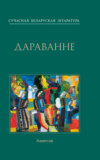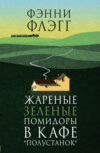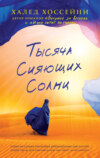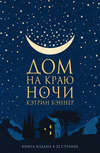Czytaj książkę: «Musical Myths and Facts, Volume 1 (of 2)»
PREFACE
An idealized portrait of Beethoven, representing him as, in the opinion of many of his admirers, he must have looked in his moments of inspiration, would undoubtedly have made a handsomer frontispiece to this little work, than his figure roughly sketched by an artist who happened to see the composer rambling through the fields in the vicinity of Vienna.
The faithful sketch from life, however, indicates precisely the chief object of the present contribution to musical literature, which is simply to set forth the truth.
Whatever may be the short-comings of the essays, they will be of some use should they impress upon musical pedants the truth of Göthe's dictum:
"Grau, theurer Freund, ist alle Theorie,
Und grün des Lebens goldner Baum."
For the sake of correctness, one or two statements occurring in this volume require a word of explanation.
On page 5, the comprehensive 'Encyclopædia of Music,' by J. W. Moore, Boston, United States, 1854, should perhaps not have been left unnoticed; it is, however, too superficial a compilation to be of essential use for reference. Dr. Stainer's 'Dictionary of Musical Terms' was not published until the sheet containing page 5 had gone through the press.
The poem, on page 175, ascribed to Shakespeare, "If music and sweet poetry agree," is by some recent inquirers claimed for Richard Barnfield, a contemporary of Shakespeare.
On page 218, Sovter Liedekens, the title of a Dutch book published in the year 1556, is incorrectly translated. Sovter, an obsolete Dutch word, means "Psalter," just like the English Sauter mentioned in Halliwell's 'Dictionary of Archaic and Provincial Words.' Liedekens should have been rendered "Little Songs."
In Volume II., the compositions of Henry Purcell noticed on page 202 form only a small portion of the works of this distinguished English musician. The Prospectus issued by the 'Purcell Society,' which has recently been founded for the purpose of publishing all his works, enumerates forty-five Operas and Dramas, besides many Odes, Hymns, Anthems, and other sacred music, instrumental pieces, &c., most of which exist only in manuscript, and which ought long since to have been in the hands of the lovers of music.
Should the reader disapprove of the easy tone in which the Myths are told, he will perhaps derive some satisfaction from the carefulness with which I have endeavoured to state the Facts.
CARL ENGEL.
Kensington.
A MUSICAL LIBRARY
If we cast a retrospective glance at the cultivation of music in England during the last twenty or thirty years, we cannot but be struck with the extraordinary progress which, during this short period, has been made in the diffusion of musical knowledge. The prosperity of England facilitates grand and expensive performances of the best musical works, and is continually drawing the most accomplished artists from all parts of the world to this country. The foreign musicians, in combination with some distinguished native talent, have achieved so much, that there are now, perhaps, more excellent performances of excellent music to be heard in England than in any other country.
Taking these facts into consideration, it appears surprising that England does not yet possess a musical library adequate to the wealth and love for music of the nation. True, there is in the British Museum a musical library, the catalogue of which comprises above one hundred thick folio volumes; but anyone expecting to find in this library the necessary aids to the study of some particular branch of music is almost sure to be disappointed. The plan observed in the construction of the catalogue is the same as that of the new General Catalogue of the Library in the British Museum. The titles of the works are written on slips of thin paper, and fastened, at a considerable distance from each other, down the pages, so that space is reserved for future entries. The musical catalogue contains only two entries upon the one side of a leaf and three upon the other. Each volume has about one hundred and ten leaves. The whole catalogue contains about 60,000 titles of musical compositions and literary works on the subject of music. The British Museum possesses, besides, a collection of musical compositions and treatises in manuscript, of which a small catalogue was printed in the year 1842. It contains about 250 different works, some of which are valuable.
Even a hasty inspection of the written catalogue must convince the student that it contains principally entries of compositions possessing no value whatever. Every quadrille, ballad, and polka which has been published in England during the last fifty years appears to have a place here, and occupies just as ample space as Gluck's 'Alceste,' or Burney's 'History of Music.' This is perhaps unavoidable. If works of merit only were to find admission, who would be competent to draw the line between these and such as ought to be rejected? In no other art, perhaps, do the opinions of connoisseurs respecting the merit of any work differ so much as in music. Since music appeals more directly and more exclusively to the heart than other arts, its beauties are less capable of demonstration, and, in fact, do not exist for those who have no feeling for them. There are even at the present day musicians who cannot appreciate the compositions of J. Sebastian Bach. Forkel, the well-known musical historian, has written a long dissertation, in which he endeavours to prove that Gluck's operas are execrable.1 Again, among the adherents of a certain modern school despising distinctness of form and melody may be found men who speak with enthusiasm of the works of Handel, Gluck, Mozart, and other classical composers, although these works are especially characterised by clearness of form and melodious expression. Besides, it must be borne in mind that even our classical composers have now and then produced works of inferior merit, which are nevertheless interesting, inasmuch as they afford us an insight into the gradual development of their powers.
In short, in a musical library for the use of a nation, every musical composition which has been published ought necessarily to be included. In the Musical Library of the British Museum it unfortunately happens, however, that many of those works are wanting which are almost universally acknowledged to be of importance. Indeed, it would require far less space to enumerate the works of this kind which it contains than those which it does not, but ought to, contain.
Again, the student must be prepared for disappointment, should he have to consult any of our scientific treatises on music. However, there may be more works relating to the science of music in the Library of the British Museum than would appear from the catalogue of music. Several have evidently been entered in the new General Catalogue. Would it not be advisable to have all the books relating to music entered in the musical catalogue? Even the most important dissertations on musical subjects which are found in various scientific works might with advantage be noticed in this catalogue. Take, for instance, the essays in the 'Asiatic Researches,' in the works of Sir W. Jones and Sir W. Ouseley, in 'Description de l'Egypte,' in the 'Philosophical Transactions.'
Thus much respecting the Musical Library in the British Museum. Let us now consider how a national musical library ought to be constituted. Premising that it is intended as much for the use of musical people who resort to it for reference, as for those who are engaged in a continued study of some particular branch of the art, the following kinds of works ought to form, it would appear, the basis of its constitution.
1. The Scores of the Classical Operas, Oratorios, and similar Vocal Compositions, with Orchestral Accompaniments.– Many of these scores have not appeared in print, but are obtainable in carefully revised manuscript copies.
2. The Scores of Symphonies, Overtures, and similar Orchestral Compositions.– The editions which have been revised by the composers themselves are the most desirable. The same remark applies to the scores of operas, oratorios, etc.
3. Vocal Music in Score.– The sacred compositions Alla Cappella, and the madrigals of the old Flemish, Italian, and other continental schools, as well as those of the celebrated old English composers. The choruses of the Greek Church in Russia, etc.
4. Quartets, Quintets, and similar Compositions in Score.– The study of these works of our great masters is so essential to the musician, that special care should be taken to secure the best editions. The classical trios for pianoforte, violin, and violoncello, and some other compositions of this kind, originally published in parts, have more recently been issued in score. The latter editions are greatly preferable to those in which the part for each instrument is only printed separately. The same remark applies to the concertos of Mozart, Beethoven, and other masters, which have been published with the orchestral accompaniment in score, as well as with the orchestral accompaniment arranged for the pianoforte or for some other instruments.
5. Sonatas, Fantasias, Fugues, etc.– Of all the classical works composed for a single instrument, the original editions, generally revised by the composers themselves, are indispensable. Besides these, the most important subsequent editions of the same works would be required. Beethoven's pianoforte sonatas, for instance, have been re-edited by several eminent pianists. It is instructive to examine the readings of these musicians, which differ in many points from each other.
6. Arrangements.– Those of operas, oratorios, masses, and other elaborate compositions with orchestral accompaniment, must necessarily be confined to the instrumental portion, otherwise they are useless either for study or reference. Those arrangements are greatly preferable which have been made by the composers themselves, or under their superintendence.
7. National Music.– All the collections of national songs and dances which have been published in different countries. The advantage which the musician might derive from a careful study of them is not yet so fully appreciated as it deserves; but it would probably soon be better understood, if these treasures were made more easily accessible.
9. Works on the Theory and History of Music.– All the standard works ought to be found in the library, not only in the languages in which they were originally written, but also in translations, if any such exist. Many of the latter are valuable, on account of the explanations and other additions by the translators. This is, for instance, the case with some English books which have been translated into German; as Brown's 'Dissertation on the Rise, Union, and Power of Music,' translated by Eschenburg; 'Handel's Life,' by Mainwaring, translated by Mattheson, etc. It need scarcely be added that the biographies of celebrated musicians ought also to be included among the desirable requisites.
10. Works on Sciences intimately connected with the Theory of Music.– Treatises on acoustics, on the construction of musical instruments, on æsthetics, etc.
11. Musical Journals.– All the principal ones published in different countries and languages. To these might advantageously be added the most important literary journals containing critical and other dissertations on music.
12. Dictionaries, Catalogues, etc.– The English language possesses no musical dictionary, technical, biographical, or bibliographical, similar to the French and German works by Fétis, Schilling, Gerber, Koch, Rousseau, and others, which are indispensable for the library. With these may be classed the useful works on the Literature of Music compiled by Forkel, Lichtenthal, and Becker, as well as Hofmeister's comprehensive 'Handbuch der musikalischen Literatur.' The collection of catalogues should comprise all those of the principal public musical libraries on the Continent and in England; those of large and valuable private libraries, several of which have appeared in print, – as, for instance, Kiesewetter's 'Sammlung alter Musik,' Becker's 'Tonwerke des XVI. und XVII. Jahrhunderts,' and others; those of the principal music-publishers, and those of important musical libraries which have been disposed of at public auctions.
There is no necessity for extending this list any further, as it will suffice to indicate the plan which, in my opinion, ought to be pursued in the formation of a national musical library. I shall therefore only observe further that there are, besides the above mentioned, several kinds of works which can scarcely be considered as of secondary importance, such as musical travels, novels, and entertaining as well as instructive musical essays; librettos of operas, and the poetry of other elaborate vocal compositions; drawings illustrating the construction of musical instruments, – as, for instance, of the most celebrated organs, of the various improvements in the pianoforte, etc.; engravings from the best portraits of celebrated musicians; faithful sketches from sculptures and paintings of nations of antiquity in which musical instruments and performances are represented, etc.
There remains yet another point which requires a moment's consideration, – namely, the daily increasing difficulty of forming such a library as has just been planned. The interest in the study of classical works relating to music is no longer confined to the professional musician, but is spreading among amateurs and men of science. Their libraries now absorb many of the old and scarce works which formerly were almost exclusively in the hands of musicians. Moreover, the English colonies have already drawn upon our limited supply of the old standard works, and there is every reason to suppose that the demand for them will continue to increase. Many of these works have evidently been published in an edition of only a small number of copies. Still it is not likely that they will be republished. In a few instances where a new edition has been made, it has not apparently affected the price of the original edition, because the latter is justly considered preferable. To note one instance: the new edition of Hawkins' 'History of Music' has not lessened the value of the first edition, the price of which is still, as formerly, on a par with the price of Burney's 'History of Music' of which no new edition has been published. About ten years ago it was possible to procure the original scores of our old classical operas, and other works of the kind, at half the price which they fetch now, and there is a probability that they will become every year more expensive. Indeed, whatever may be the intrinsic value of any such work, the circumstance of its being old and scarce seems sufficient, at least in England, to ensure it a high price.
If, therefore, the acquisition of such a national musical library as I have endeavoured to sketch is thought desirable, no time ought to be lost in commencing its formation.
ELSASS-LOTHRINGEN
Whatever may be thought of the value of the well-known aphorism, "Let me make a nation's Ballads; who will may make their Laws" – it can hardly be denied that through the popular songs of a country we ascertain to a great extent the characteristic views and sentiments of the inhabitants.
The villagers of Alsace recently may not have been in the mood for singing their old cherished songs; otherwise the German soldiers must have been struck by recognizing among the ditties old familiar friends slightly disguised by the peculiar dialect of the district. Take, for instance, the cradle songs, or initiatory lessons as they might be called. Here is one as sung by the countrywomen of Alsace: —
"Schlof, Kindele, schlof!
Dien Vadder hied die Schof,
Dien Muedder hied die Lämmele,
Drum schlof du guldi's Engele;
Schlof, Kindele, schlof!"
(Sleep, darling, sleep!
Thy father tends the sheep,
Thy mother tends the lambkins dear,
Sleep then, my precious angel, here;
Sleep, darling, sleep!)
And another: —
"Aie Bubbaie was rasselt im Stroh?
D'Gänsle gehn baarfuesz, sie han keen Schueh;
Der Schuester het's Leder, keen Leiste derzue."
(Hush-a-bye baby, what rustles the straw?
Poor goslings go barefoot, they have not a shoe;
The souter has leather, no last that will do.)
Making allowance for the pronunciation of the words, which sounds odd to the North-German ear, these are the identical lullabies with which the mothers in the villages near Hanover sing their babies to sleep. Some of the old ballads, legends, fairy-tales, and proverbs, popular in Alsace, are current throughout almost the whole of Germany. Then we have the old-fashioned invitation to the wedding feast, stiff and formal, as it is observed especially in Lower Alsace, and likewise in the villages of Hanover and other districts of North Germany. In Alsace the weddings take place on a Tuesday, because, they say, we read in the Bible: "And the third day there was a marriage in Cana of Galilee." In sacred poetry Alsace can pride herself upon having produced some of the most distinguished German writers. The oldest known of these is Ottfried von Weissenburg, who lived about the middle of the ninth century. Gottfried von Strassburg, in the beginning of the thirteenth century, was renowned as a writer of hymns as well as of Minnelieder. The first sacred songs of a popular character recorded in Alsace date from about the middle of the fourteenth century. But it is especially since the time of the Reformation that this branch of sacred poetry has been much cultivated here as in other parts of Germany. The authors of sacred poetry were generally either theologians or musicians. The latter often composed the words as well as the airs. Music and poetry were not cultivated so separately as is the case in our day. Of the musicians, deserves to be mentioned Wolfgang Dachstein, who, in the beginning of the sixteenth century, was organist in Strassburg, first at the Cathedral, and afterwards, when he become a Protestant, at the Thomas Church. His hymn An Wasserflüssen Babylon is still to be found in most chorale books of the German Protestants.
The secular songs of the villagers are not all in the peculiar dialect of the province. Some are in High German, and there are several in which High German is mixed with the dialect. Occasionally we meet with a word which has become obsolete in other German districts; for instance, Pfiffholder for "Schmetterling," Low German "Buttervogel," English "butterfly;" Irten (Old German Urt, Uirthe) for "Zeche," English "score." Of the lyric poets of the present century, Hebel is, perhaps, the most popular in Alsace. His "Allemannische Gedichte" used to be sung especially in the southern district, which, until recently, formed the French department of Haut-Rhin. The people of this district have a less soft pronunciation than those of Bas-Rhin.
As regards the popular songs of Lorraine, those which have been collected and published are, almost all of them, from the French districts of the province.
The Société d'Archéologie Lorraine has published a collection, entitled 'Poésies populaires de la Lorraine, Nancy, 1854;' and R. Grosjean, organist of the Cathedral of Saint-Dié-des-Vosges, has edited a number of old Christmas Carols, arranged for the organ or harmonium, and published under the title of 'Air des Noëls Lorrains, Saint-Dié, 1862.' In the German villages we meet with songs in a peculiar dialect, not unfrequently interspersed with French words. The following example is from the neighbourhood of Saarlouis: —
"Of de Bam senge de Viglen bei Daa ond Naat,
D'Männtcher peife hibsch on rufe: ti-ti-pi-pi,
On d'Weibcher saan: pi-pi-zi-zi.
Se senge luschtig on peife du haut en bas.
Berjer, Buwe on Baure d'iwrall her,
Die plassire sich recht à leur aise.
Se senge ensemble hibsch on fein.
D'gröscht Pläsirn hot mer van de Welt
Dat mer saan kann am grine Bam;
Dat esch wohr, dat esch keen Dram."
(On the tree sing the birds by day and night,
They pipe and call, ti-ti-pi-pi;
Their mates reply, pi-pi-zi-zi.
They cheerfully chirp du haut en bas,
High life and low life, from all around,
Placent themselves quite à leur aise.
They sing ensemble sweet and fine.
No greater plaisir earth can give
Than the sight of a greenwood tree;
That's truth, no idle dream.)
Thus much about the words of the popular songs. As regards the airs, those which have been traditionally preserved by the villagers of Alsace exhibit the characteristics of the German national music. That the construction of the airs has not altered much in the course of a century is evident from the specimens of songs and dance-tunes which Laborde gives in his 'Essai sur la Musique,' published in the year 1780. Still earlier, about two hundred years ago, the French composers adopted from Alsace a German tune of a peculiar construction, the Allemande. This happened at the time of the invention of the Suite, a composition which consists of a series of short pieces written in the style of popular tunes of various countries. The Allemande, which generally formed the introductory movement to the series, is more dignified than the sprightly Courante, Gavotte, and Bourrée, originally obtained from different provinces of France.
Particularly interesting is the music of the peasant of Kochersberg. The mountain called Kochersberg is situated in the vicinity of the town of Zabern in Upper Alsace. The district immediately surrounding the mountain is also called Kochersberg. The villagers of this district are considered by the French as rather rude in manner, but as honest, straightforward, and trustworthy. They have several old favourite dances, as for instance, Der Scharrer ("The Scraper"), Der Zäuner ("The Fence Dance"), Der Morisken (evidently the "Morrice" or Moorish Dance, formerly also popular in England, and originally derived from the Moors in Spain), Der Hahnentanz ("The Cock Dance"). The last-named dance, which is also popular in other districts of Alsace, and, with some modifications, in the Black Forest of Germany, is generally performed in a large barn. On a cross-beam is affixed a dish, in which is placed a fine large cock (called Guller). The cock is ornamented with ribands of various colours. Near the dish hangs a tallow-candle, through which a string is drawn horizontally. To one end of the string is attached a leaden ball. The dancers arrange themselves in pairs, one behind the other. As soon as the musicians strike up, the candle is lighted, and the first pair receive a nosegay, which they have to hold as long as they continue dancing. When they are tired, and stop to rest, they must give the nosegay to the next following pair, and so on. The pair which have possession of the nosegay at the moment when the candle burns the string, and the ball falls into the dish, win the cock. The Hammeltanz of the Kochersberg peasants is likewise known in Baden. In this dance a fat wether is the prize of the lucky pair who happen to be dancing when a glass suspended by a burning match-cord becomes detached and falls to the ground. Some of the dancers are accompanied with singing; for instance, the Bloue Storken, in which the song begins with the words: —
"Hon err de bloue Storken nit g'sähn?"
(Have you not seen the blue storks?)
The Bloue Storken is one of the oldest national dances of the Alsatian peasants. It is danced by one person only. At the commencement his performance resembles that of the slow and grave minuet; after awhile it becomes more animated.
However, in a musical point of view, the most interesting of these dances is the Kochersberger Tanz, which is mentioned by Reicha and other musical theorists on account of its peculiar rhythm. According to Reicha's notation it is in 5/8 time. Perhaps it would have been as correctly written in 3/8 and 2/8 alternately, like Der Zwiefache, or Gerad und Ungerad ("Even and Uneven"), of the villagers in the Upper Palatinate of Bavaria, to which it bears altogether a strong resemblance. The musical bands attending the villagers at dances and other rural pastimes are, as might be expected, very simple – a clarionet and one or two brass instruments generally constituting the whole orchestra.
In Alsace a certain musical instrument is still to be found which, about three centuries ago, was popular in Germany. Some of the works on music published in the beginning of the seventeenth century contain drawings of it. Its German name is Scheidholt, and its French name is bûche. It consists of an oblong square box of wood, upon which are stretched about half-a-dozen wire-strings. Some of the strings run over a finger-board provided with iron frets. These strings are used for playing the melody. The others are at the side of the finger-board, and serve for the accompaniment. The strings are twanged with a plectrum. The Scheidholt may be considered as the prototype of the horizontal cither which, in the present century, has come much in vogue in Bavaria and Austria, and which has recently been introduced also into England.
Formerly, the professional musicians of Alsace formed a guild, the origin of which dates from the time of the Minnesänger, when players on musical instruments wandered from castle to castle to entertain the knights with their minstrelsy. In the year 1400 a Roman imperial diploma was granted to Count Rappoltstein constituting him protector of the guild. The musicians were called Pfeiffer, and Count Rappoltstein and his successors had the title of Pfeiffer-König ("King of the Pipers"). In the seventeenth century the Pfeiffer held annually a musical festival at Bischweiler, a small town near Strassburg. Having gradually fallen into decay, this old guild died out in the year 1789.
Considering the influence which the principal town of a country usually exercises upon the taste of the rural population, a few remarks relating to the cultivation of music in Strassburg may find here a place. Strassburg possesses, indeed, valuable relics illustrative of the history of music as well as of the other fine arts. Unfortunately, several of these treasures were injured at the recent bombardment. The town library, which was burnt, contained some valuable musical manuscripts; for instance, the Gesellschaftsbuch der Meistersänger from the year 1490 to 1768, and an historic treatise on the music and the Meistersänger of Strassburg written in the year 1598, by M. Cyriacus Spangenberg. To antiquarians who deplore the loss of these relics it may afford consolation to know that the town library of Colmar, in Alsace, possesses a manuscript collection of more than 1,000 old Minne-songs and Meister-songs, which originally belonged to the guild of shoemakers of Colmar. It must be remembered that in the beginning of the fourteenth century, after the Minnesänger of the Middle Ages, like the old chivalry with which they were associated, had become obsolete, there sprang up in Germany a corporation of poets and singers constituted of citizens, and known as the Meistersänger. Strassburg was one of the first among the German towns in which the Meistersänger flourished. An old sculpture of a Meistersänger, life-size, placed under the celebrated organ of the cathedral, testifies to the popular esteem enjoyed by this corporation. The town library possessed two curious oil-paintings on panel, dating from about the year 1600, which belonged to the Meistersänger of Strassburg, who used to place them one at each side of the entrance to their hall of assembly. A collection of antiquated musical instruments, which, probably, originally belonged to the Meistersänger, was formerly in a public building called Pfenningthurm, from which, in the year 1745, it was removed to the town library, where it was reduced to ashes.
However, the most interesting musical instrument in Strassburg is the organ of the cathedral made by Andreas Silbermann. Notwithstanding the care exercised by the beleaguerers to prevent damage to the cathedral, a shell found its way right through the centre of the organ, and must have greatly injured this work of art. Andreas Silbermann was no mere handicraftman, but an artist like Amati or Stradivari. He was born in Saxony, settled in Strassburg in the year 1701, and built the organ of the cathedral in 1715. His brother, Gottfried Silbermann of Saxony, was likewise a distinguished maker, not only of organs, but also of clavichords, and an improver of the pianoforte soon after its invention, in the beginning of the eighteenth century. Almost all the organs built during the eighteenth century for the churches of Strassburg are by Andreas Silbermann and his sons. Among the latter, Johann Andreas is noteworthy on account of his antiquarian pursuits. He wrote, besides other works, a 'History of the Town of Strassburg,' which was published in folio, with engravings, in the year 1775. His collection of sketches drawn by himself of the most remarkable scenery, and of old castles and other interesting buildings of Alsace, and likewise his collection of the old coins of Strassburg, were preserved in the town library, and are, it is to be feared, now lost. As even the catalogue of the library has, it is said, been burnt, it may be worth while to notice some of the losses. With the irreparable ones must be recorded a copy of the first hymn book of the Protestant Church, of which no other copy is known to be extant. It was published at Erfurt in the year 1524, and contains twenty-five songs, eighteen of which are by Luther. Its title is Enchiridion, oder eyn Handbuchlein eynem yetzlichen Christen fast nutzlich bey sich zu haben, zur stetter vbung vnd trachtung geystlicher gesenge und Psalmen, Rechtschaffen vnd Kunstlich vertheutscht. ("Enchiridion, or a little Hand-book, very useful for a Christian at the present time to have by him for the constant practice and contemplation of spiritual songs and psalms, judiciously and carefully put into German.") The musical notation is given with the words. It is believed that Luther gave the manuscript of his own songs, and most likely also of the other songs, and of the musical notation, into the hands of the publisher; – that, in fact, the "Enchiridion" emanated directly from Luther. A fac-simile of this book was published in Erfurt in the year 1848. Only three chorales are known with certainty to be of Luther's composition.











